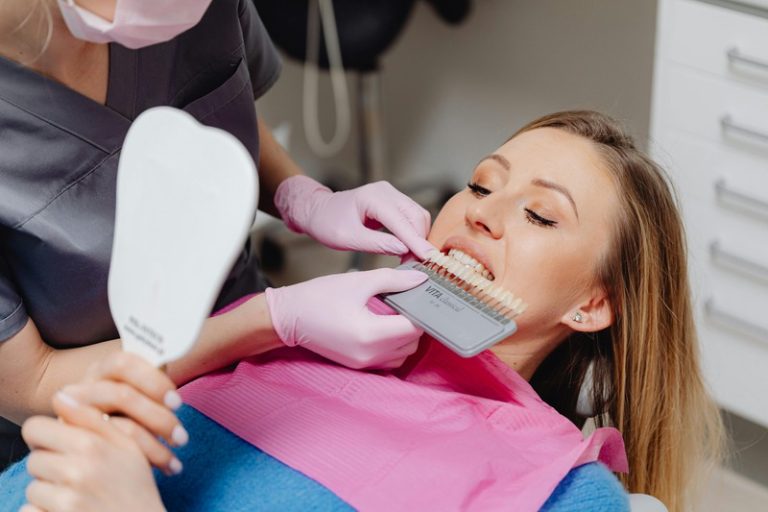How Can I Prevent Tooth Staining?
Maintaining a bright smile can be a challenging task, especially when our daily habits often contribute to tooth staining. The good news is, with mindfulness and preventive measures, it is possible to minimize discoloration and keep your teeth looking their best.
The Causes of Tooth Staining
Understanding why teeth become stained is the first step toward preventing it. Tooth staining can be grouped into two main types: extrinsic and intrinsic stains. Knowing the differences between these types will help you better address the issue and keep your teeth looking bright.
Extrinsic Stains: The Surface Stains
Extrinsic stains are those that form on the surface of the teeth. These stains are often related to what we eat and drink. Common culprits include coffee, tea, red wine, and tobacco products. Each of these can leave a mark on teeth over time.
-
Coffee and tea contain pigments that can stick to teeth.
-
Red wine has tannins that can cause staining as well.
-
Tobacco not only stains teeth but can also lead to other dental problems.
The good news is that extrinsic stains can often be removed with regular brushing and professional cleanings. Making smart choices about your diet can also help prevent these stains from forming in the first place.
Intrinsic Stains: The Deeper Stains
Unlike extrinsic stains, intrinsic stains develop inside the tooth structure. This type of staining can happen for several reasons, including certain medications, trauma to the teeth, or specific medical conditions. Intrinsic stains are generally more challenging to remove than extrinsic stains.
-
Some antibiotics may cause discoloration in developing teeth.
-
Trauma or injuries can lead to discoloration within the affected teeth.
-
Certain medical conditions can change the color of teeth over time.
Addressing intrinsic stains often requires a visit to the dentist for treatment options. Understanding these causes allows you to take better care of your teeth and seek help when necessary.
Cut Back on Staining Foods and Beverages
One of the easiest ways to curb tooth staining is by moderating the intake of notorious stain-causing foods and beverages. These include:
-
Coffee and tea
-
Red wine
-
Soda and dark-colored juices
-
Berries and tomato-based sauces
If giving up these items seems too daunting, consider sipping beverages through a straw to limit contact with your teeth or quickly rinse your mouth with water after consuming them.
Adopt a Robust Oral Hygiene Regime
Your daily oral hygiene practices play a pivotal role in preventing tooth staining. Brushing twice a day for two minutes with a fluoride toothpaste, flossing once daily, and using an antiseptic mouthwash can help to remove plaque and potential stain-buildup.
Routine Dental Cleaning and Checkups
Regular dental cleanings and checkups are instrumental in keeping teeth stain-free. Professional cleanings can help remove plaque and tartar that contribute to staining. Moreover, during a checkup, dentists can identify and suggest treatment for any early signs of discoloration.
However, if routine care does not effectively address deeper or intrinsic stains, exploring the benefits of dental implants might be a viable solution. Dental implants not only improve oral functionality but also offer a bright, white appearance that is resistant to staining, ensuring your smile remains radiant for the long term.
Mind Your Mouth After Meals
It’s not just what you eat but what you do after eating that can prevent staining. Rinsing your mouth with water or chewing sugar-free gum can increase saliva production, which naturally cleans your teeth and neutralizes acid.
Opt for Whitening Toothpaste and Products
Today’s market offers a myriad of whitening toothpastes and over-the-counter products. These can be effective in removing surface stains through gentle polishing, chemical chelation, or other non-bleaching actions. For deeper stains, however, you might need professional help.
Professional Treatments
Persistent or intrinsic stains may require professional treatments. Let’s explore a couple of options that can help you maintain a sparkling smile: Regular visits to a friendly dentist in Saskatoon, can ensure you’re not only keeping stains at bay but also maintaining overall oral health. A trusted dental practice will offer valuable advice tailored to your specific needs and can perform professional cleanings that reach spots you might miss during your daily routine.
Consider Lifestyle Changes
Aside from immediate dental care, lifestyle shifts can have a significant impact on preventing tooth staining. Quitting smoking, reducing the intake of dark beverages, and incorporating more crunchy, water-rich fruits and vegetables into your diet can lead to noticeable improvements.
Professional Whitening Options
For those looking to refresh their smile, professional whitening treatments can be a game-changer. Common professional techniques include:
-
In-office bleaching procedures
-
Custom-fitted tray whitening systems
-
UV light-accelerated whitening
They offer more substantial results than over-the-counter methods due to higher concentrations of bleaching agents and the careful oversight of dental professionals. Even with preventive measures in place, you might be seeking a brighter smile. Opting for professional solutions like teeth whitening in Saskatoon is an excellent way to elevate your dental aesthetics safely and effectively, providing a more striking result than home-based products.
Closing Remarks
In summary, preventing tooth staining encompasses a combination of moderation, diligent oral hygiene, routine professional care, and lifestyle modifications. Understanding the underlying causes of stains and proactively addressing them with both home practices and dental treatments will ensure your smile stays bright and healthy. Embrace these tips, and look forward to sharing your beaming, stain-free smile with the world.





